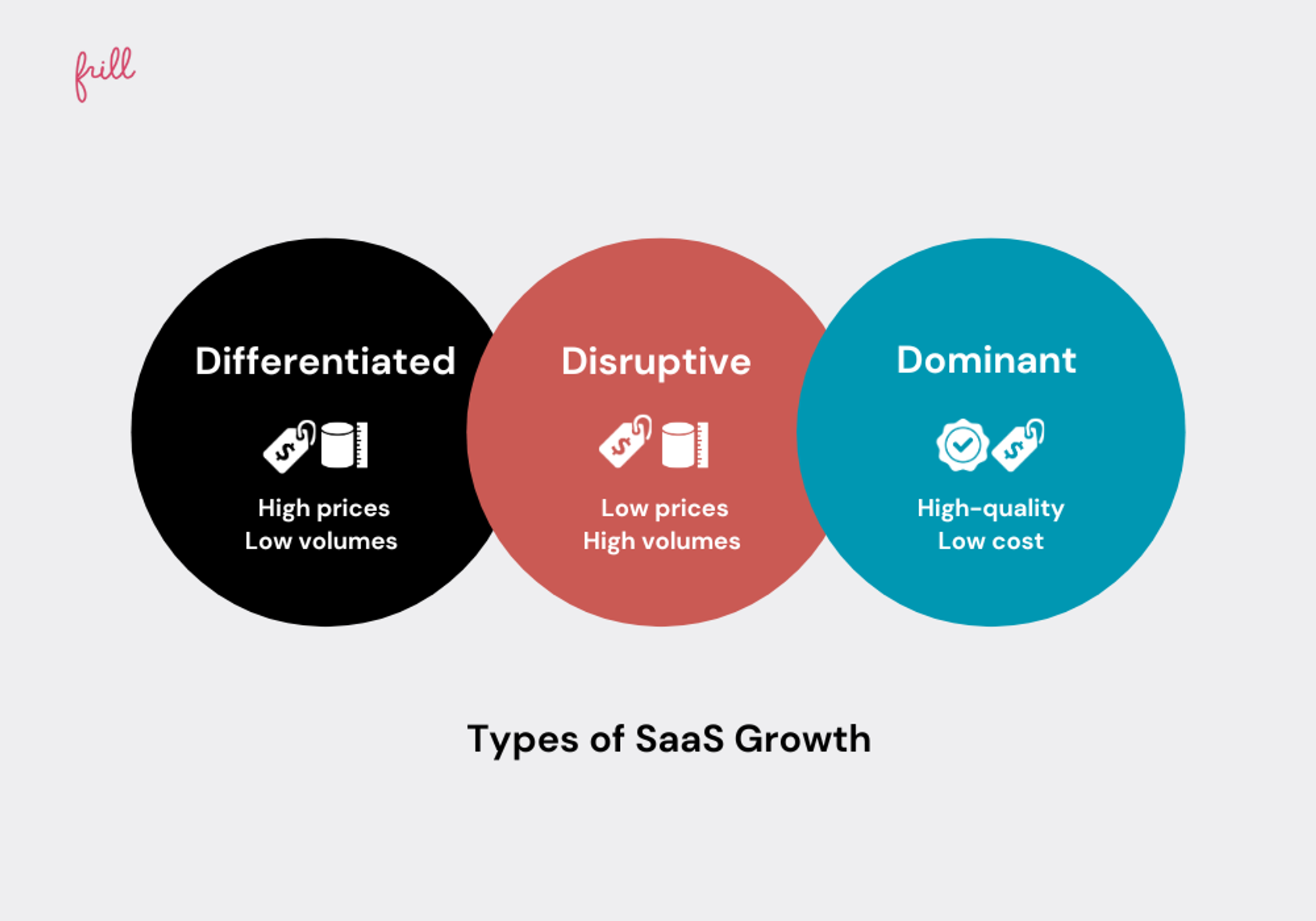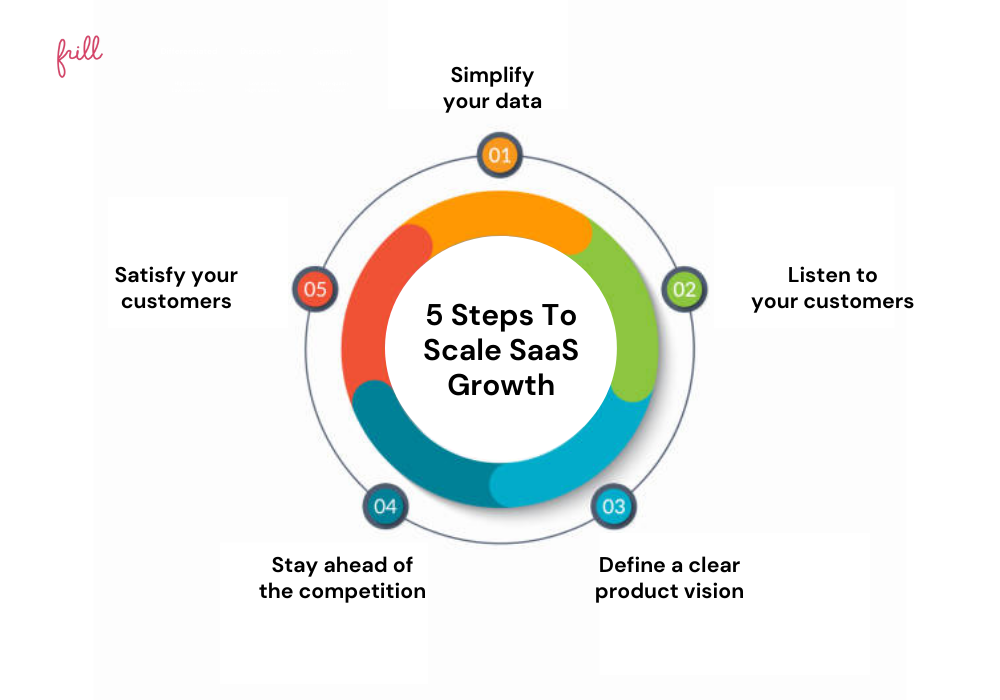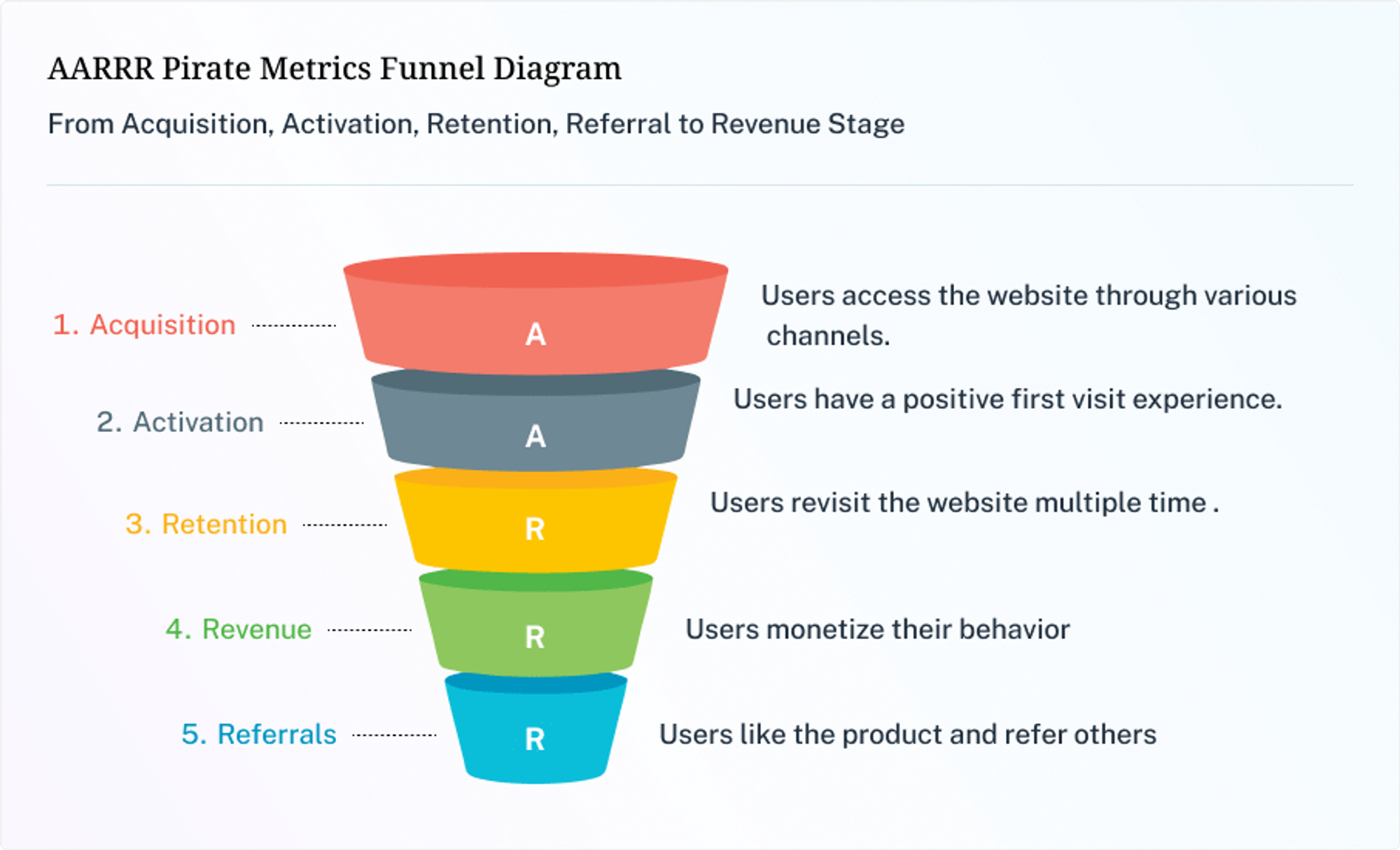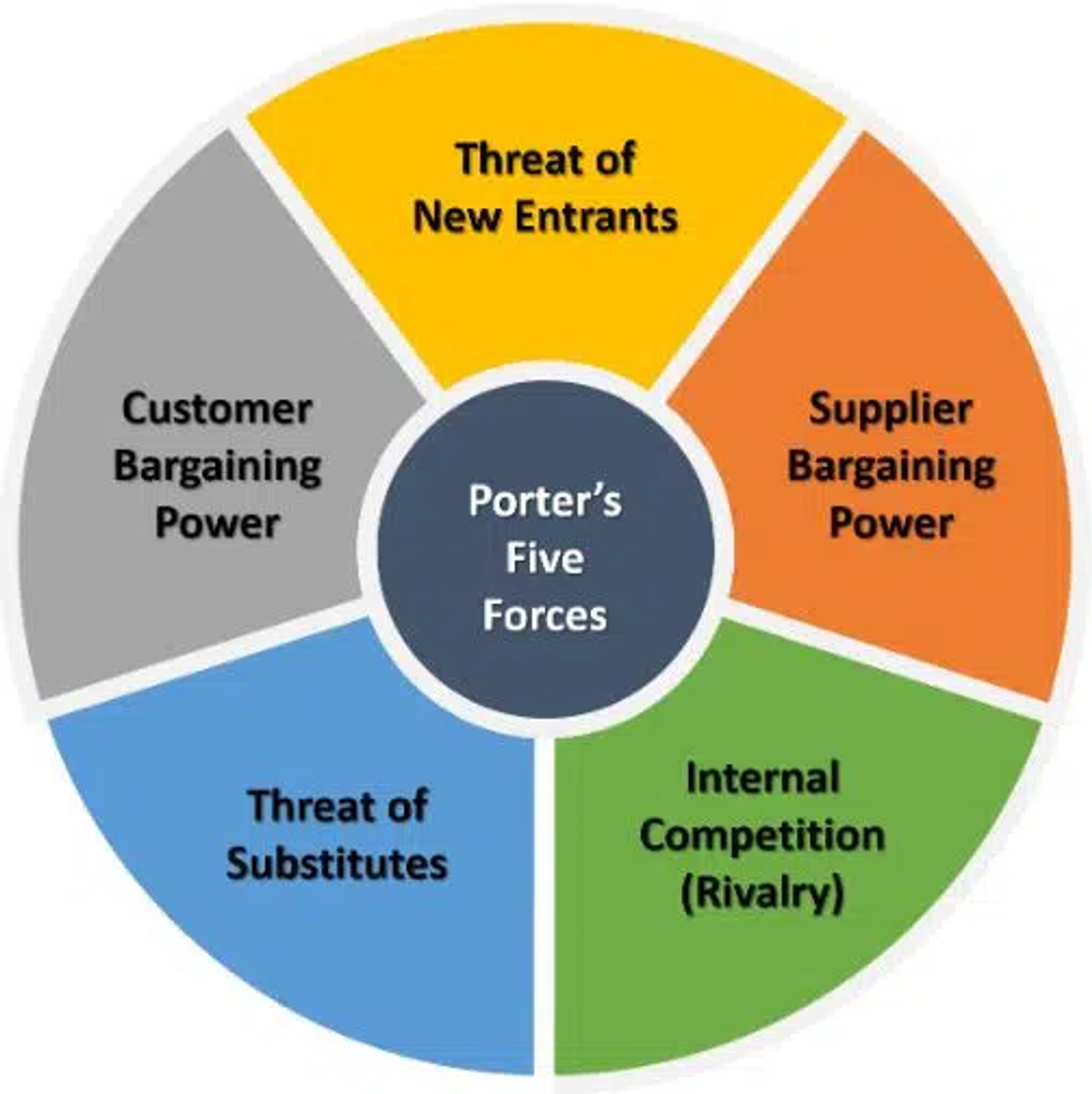Key Levers of SaaS Growth Strategies
Last updated on Mon Aug 05 2024
Over time, SaaS growth is primarily driven by how effectively subscription plans and products are utilized. To succeed, it's crucial to gain a competitive edge by implementing scalable product-led growth strategies.
Having good knowledge of SaaS growth benchmarks is very important because they offer valuable guidance to help shape and refine your overall strategy.
In this guide, we consider the key levers of SaaS growth, focusing on critical areas like:
Product-led growth strategies
Customer retention techniques
Understanding user needs through the Jobs-To-Be-Done framework
Also, we discuss effective methods such as the AARRR Flywheel and Porter's Five Forces. These strategies can help you refine your approach, accelerate growth, and eventually craft a winning SaaS growth strategy.
Types of SaaS Growth

Determining the optimal strategy for your organization requires an understanding of the various SaaS growth techniques. Whether it's on market dominance, disruption, or differentiation, every strategy has a distinct focus. The three main categories of SaaS growth methods listed below can direct your efforts:
Differentiated SaaS Growth
This strategy focuses on unique features to stand out and yield higher returns at high prices and low volumes. Leveraging insights from feature discovery can aid in identifying unique features.
Disruptive SaaS Growth
Disruptive products, priced low but in high volume, aim for rapid market leadership with easy-to-use solutions that deliver immediate results. Using a feature prioritization matrix can help in deciding which low-cost features to roll out quickly.
Dominant SaaS Growth
The goal here is to quickly acquire customers with a high-quality product at a low cost, seeking to dominate the market. Employing efficient product management processes can streamline your efforts.
5 Steps To Scale SaaS Growth, Regardless of Your Competitive Strategy

1. Make Sense of Your Data
Analyze user behavior within your product to identify growth opportunities, but keep the data actionable and supported by user research. Break down the data into understandable insights that your team can act on quickly. Remember, data without context is just noise, so focus on what truly drives user engagement and satisfaction.
To further streamline this process, consider using an SQL AI tool that enables your marketing team to efficiently dig into the data, turning complex queries into actionable insights without requiring deep technical expertise.
2. Listen to Your Customers
A memorable product experience is a competitive advantage. Gain actionable feedback by measuring user satisfaction proactively and reactively. Engage with your customers regularly to understand their pain points and desires. Their feedback isn't just helpful—it's a roadmap for where your product should go next.
3. Create Your Vision and Positioning
Define a clear product vision and establish strong messaging that resonates with your customers for sustainable growth and improved conversions. Your vision should inspire both your team and your users, while your positioning should communicate the unique value your product brings. Consistency in this messaging will help build trust and long-term loyalty.
4. Be Quick To Adapt and Iterate
Use customer feedback and market research to evolve your offerings, fostering agility for continuous improvements and market leadership. The faster you can respond to changing needs, the better you can stay ahead of the competition. Embrace a culture of continuous iteration, where no feature is ever truly "finished" but always evolving based on real-world usage.
5. Double Down on Making Your Customers Successful
Retention is crucial. Satisfy customers to increase lifetime value, promote word-of-mouth, and boost your investment return on user acquisition. Tools like customer feedback tools can help in understanding customer needs better. Focus on understanding what success looks like for your customers and how your product can help them achieve it.
The more successful your customers are, the more likely they are to become advocates for your brand, driving organic growth.
Understanding the Jobs-To-Be-Done (JTBD) of Your Users
Comprehending your users' needs is essential for product adoption and success. Assessing functional, emotional, and social JTBD factors can guide product alignment. Check out our guide to feature requests for insights on aligning your product to these needs.
The Role of JTBDs in Improving Product Adoption and SaaS Growth
The Jobs-to-Be-Done (JTBD) framework plays a crucial role in enhancing product adoption and driving SaaS growth by focusing on the core needs and problems that customers are trying to solve. By understanding the specific "jobs" that users hire your product to do, you can design solutions that better meet their expectations and pain points, leading to higher adoption rates and improved customer satisfaction.
Implementing the JTBD framework allows SaaS companies to create more targeted and effective products, ensuring that each feature and update aligns with the real-world needs of users. This user-centric approach not only boosts product adoption but also fosters long-term customer loyalty, contributing to sustained growth. For practical tips on applying the JTBD framework, refer to our idea tracking guide.
The AARRR Flywheel To Accelerate and Measure SaaS Growth

Source: Userlove
The AARRR framework, also known as the Pirate Funnel, is a set of metrics that helps SaaS businesses measure and accelerate growth. AARRR stands for Acquisition, Activation, Retention, Revenue, and Referral, and each metric represents a critical stage in the customer journey. By focusing on these metrics, businesses can understand where to optimize their strategies to drive growth. The flywheel concept suggests that improvements in any of these areas can create momentum that drives further success, similar to a flywheel gaining speed.
The Pirate Funnel Framework
Acquisition:
Measures how many potential customers you attract to your product or service.
Activation:
Tracks how many of those customers have a meaningful first experience with your product.
Retention:
Indicates how many customers continue to use your product over time.
Revenue:
Measures how much money you make from your customers.
Referral:
Tracks how many customers refer others to your product, helping to drive organic growth.
For more metrics and benchmarks, read our SaaS growth benchmarks.
Bonus: 3 Ways To Gain to Immaculate SaaS Growth
Porter's Five Forces

Source: One Step Ahead Advisory
Analyze the competitive environment with Porter's Five Forces to maximize profit and assess threats from new market entrants or established competitors. Use a product roadmap template to organize and prioritize your strategic initiatives.
Perceptual Mapping
Use perceptual maps to compare your brand to competitors and fill consumer perception gaps in quality, price, and market share. This can also be a part of your product management process.
Leverage Scalable Marketing Channels
Utilize scalable marketing channels such as content marketing, SEO, and paid advertising to attract and convert new customers efficiently. These channels can help you reach a broader audience and drive growth by targeting the right customer segments at the right time.
Are You Ready To Craft Your SaaS Growth Strategy?
The SaaS market is expanding rapidly. A strategy centered on customer-led growth and understanding their needs is key to winning market leadership. Engaging users through feature voting can greatly enhance your growth strategy.
Leverage data analytics to identify emerging trends and adjust your product offerings accordingly. Prioritize customer-centric innovations to differentiate your SaaS solution in a competitive landscape.
Resolve Issues Faster With Visual Bug Reporting
Simplifying bug reporting with visual tools like screen recordings can enhance problem-solving and customer satisfaction. Implementing a website feedback widget can streamline this process.
Integrate these tools with your project management system to ensure seamless communication between your development team and users. By reducing the time to resolution, you can boost customer retention and strengthen your product's reputation.